Water is essential to people’s way of life and economic activity. Unfortunately, a variety of water-related challenges are making their presence felt, both overseas in the form of water shortages and water pollution, and in Japan where measures are needed to deal with increasingly severe disasters as well as the aging of water and sewerage infrastructure and constrained finances.
Hitachi, meanwhile, is accelerating the activities of its Social Innovation Business that seeks to combine improvements in quality of life with solutions to societal challenges by working globally to enhance three different type of value: social, environmental, and economic. The water industry is part of this, and Hitachi is using its water environment solutions business to help overcome these challenges.
This section of Hitachi Review describes the latest activities in this area, including the products, systems, and services that underpin this business and examples of how rapidly advancing digital technologies are being put to use.
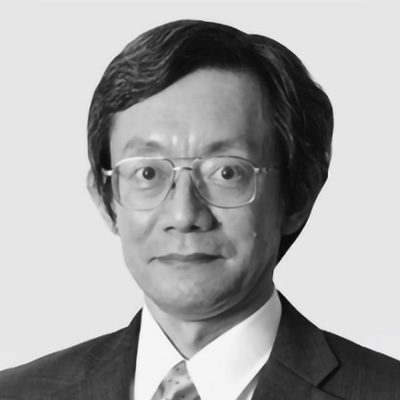
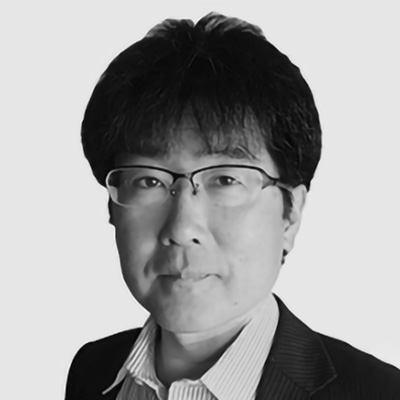
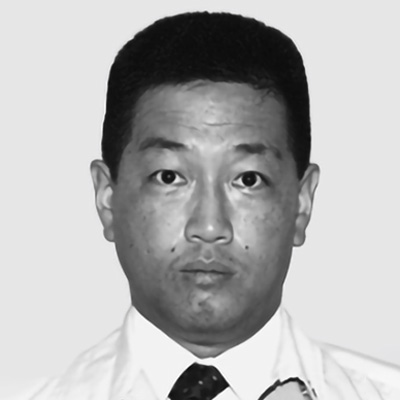
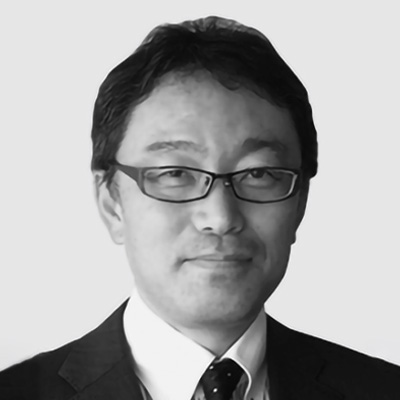
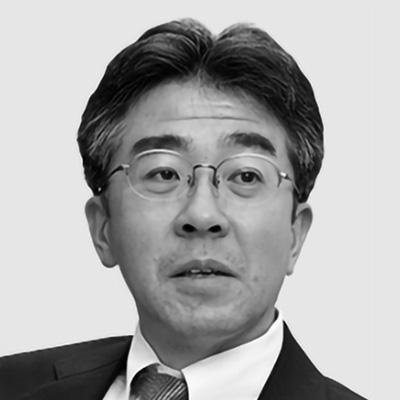
Among all the different forms of social infrastructure, which include energy, transportation, information, education, and healthcare, water is one of the most important, being essential to sustaining life. However, the issues differ from place to place, in some cases involving the uneven distribution of global water resources and the consequent shortages, in others the problems of water shortages and water pollution due to the concentration of populations in cities. Japan, meanwhile, faces a number of issues, including the aging of water and sewerage facilities and pipe networks, the financial constraints confronting the local governments or utilities that manage and maintain them, and the challenge of dealing with disasters that have become increasingly severe in recent years.
One of the 17 Sustainable Development Goals (SDGs)(1) of the United Nations is to “Ensure availability and sustainable management of water and sanitation for all” (Goal 6), and a number of the other goals also relate to water. Work continues on achieving these goals by 2030.
Against this background, Hitachi in its 2021 Mid-term Management Plan has laid out a strategy of accelerating its Social Innovation Business that seeks both to improve people’s quality of life (QoL) and deliver solutions to societal challenges by simultaneously enhancing social, environmental, and economic value for its customers. The aim is to contribute to overcoming these challenges through a combination of operational technology (OT) for the operation and control of infrastructure and IT that utilizes Lumada* as well as other products and systems.
Hitachi’s business activities that deal with water and its place in the wider environment form part of this Social Innovation Business, and its water environment solutions business is helping overcome these challenges based on its past involvement with OT, products, and systems that stretches back nearly a century(2). New activities undertaken through collaborative creation with customers, who include water and sewerage utilities and related institutions, are picking up pace, with active use being made especially of the IT and digital technologies that have made such rapid progress in recent years.
This article describes these water environment solutions and the products, systems, and services that underpin them, and also gives recent examples of how Hitachi is contributing to resolving challenges through collaborative creation in a variety of forms.
Fresh water, the sort that people drink and use in their daily lives, is thought to make up only 0.01% of all the water on the planet. Moreover, its uneven geographical distribution means that there are some places, especially in the tropics, that suffer from economic and physical water shortages.
Many parts of the world also experience flooding or drought, with climate change believed to play a role. The 5th Assessment Report of the Intergovernmental Panel on Climate Change (IPCC) expresses concern about global-scale impacts on water resources and the environment, with glacier shrinkage, sea level rises, and greater regional variability in rainfall predicted for the future(3).
Japan, too, in recent years has seen frequent instances of heavy localized rainstorms, flooding, and other adverse events, with measures being needed to deal with higher than anticipated rainfall. Consideration also needs to be given to changes in the quantity and quality of water resulting from long-term climate change.
Being heavily impacted by the climate and natural environment, water raises numerous challenges to be addressed, including those relating to social infrastructure in various different forms. While the use of water in daily life and other economic activity is part of its natural cycle, effort is also called for to ensure a sustainable water cycle and robust water infrastructure.
The Organisation for Economic Co-operation and Development (OECD) predicts that global demand for water will rise by 55% between 2000 and 2050, especially water for industrial use, electricity generation, and domestic use(4). It also predicts rising populations in particular river catchments expected to suffer from severe water shortages, especially in the northern and southern parts of Africa and in South and Central Asia.
Japan’s Ministry of Economy, Trade and Industry (METI), meanwhile, estimates that the water industry will have a global market size of 86.5 trillion yen in 2025, 1.4 times larger than in 2007. Japanese companies are expected to play a role in growth markets such as seawater desalination, industrial water, and water reuse through their expertise in membrane-based treatment and efficiency technologies(5).
In Japan, water supplies reached 98% of the population in FY2017, with 90.9% being covered by some form of wastewater treatment (including sewage, agricultural community wastewater treatment, and septic tanks)(6), (7). The market for water and sewerage infrastructure is shifting away from new construction and toward upgrades of existing plant. Nevertheless, numerous challenges remain, including the constrained budgets of local government, falling numbers of experienced staff, and reduced demand for water brought about by changing living practices and a shrinking population. A variety of measures will be needed if water and sewerage infrastructure is to be passed on to the next generation in good condition.
In response to this situation, the Ministry of Health, Labour and Welfare and the Ministry of Land, Infrastructure and Transport (MLIT) respectively published their New Water Supply Vision (2013) and New Sewerage Vision (2014) that laid out their long-term visions for water and sewage, including how to go about resolving the challenges faced and the roles of the different parties involved. A revision to the Water Supply Act was subsequently passed in 2018 aimed at strengthening the fundamentals of the water business, coming into force in October 2019. Along with appropriate asset management and use of public-private partnerships, the new law also promotes regional coordination through collaboration between water utilities and regional and local governments(8).
Hitachi is working on overcoming the water-related challenges in many different areas, including conservation of water resources, flood control, water use, domestic and industrial water supplies, sewage and industrial wastewater treatment, and water production and recycling. By promoting water environment solutions as well as individual products and services, the aim is to contribute to comprehensive solutions and system-wide optimization. Figure 1 lists the main technologies, products, systems, and services that underpin the solutions on offer, grouped by sector.
Hitachi is making active use of IT and other digital technologies as well as its OT, products, and systems. Examples include use of the Internet of Things (IoT) and artificial intelligence (AI), including its own Lumada digital solution, in systems such as those for planning, operations, and support and for maintenance support. In particular, the pace of activity is picking up in areas like water demand prediction and water quality simulation, support for equipment and pipe network management, and the transfer of skills from experienced staff.
Hitachi also published its Intelligent Water System concept in 2010 that aims to achieve system-wide optimization of the water cycle within a city or catchment, keeping track of the flows of both water and information (see Figure 2). Rapid technical progress in sensors and communications means that it is possible to collect information online not only from water infrastructure but also from the networks of pipes that link them together and home water meters. Projects have also been undertaken to evaluate the benefits of the IoT in the water industry(9), with an acceleration of initiatives that extensively track and utilize the flows of both water and information.
The government’s 5th Science and Technology Basic Plan promotes the idea of Society 5.0, a prosperous and human-centric “super-smart society” that takes maximum advantage of information and communication technology (ICT)(10). It is hoped that this will bring about a society able to extract and utilize useful knowledge from the information obtained by sorting and processing large quantities of digital data(11). Meanwhile, the public and private sectors are working together on “Society 5.0 for SDGs,” which aims to implement societal systems for achieving the SDGs, with the government, METI, and Japan Business Federation (Keidanren) being among those involved(12). In the water sector, Hitachi is contributing through its water environment solutions to the robustness of the water infrastructure, improvements in QoL, and the resolution of societal challenges with the aim of achieving both Society 5.0 and the SDGs (see Figure 3).
Figure 1 — Key Technologies, Products, Systems, and Services for Water Environment Solutions As there is no single solution to the many issues facing water, Hitachi brings together a variety of diff erent technologies, systems, and services to help overcome challenges in many diff erent areas, including conservation of water resources, flood control, water use, domestic and industrial water supplies, sewage and industrial wastewater treatment, and water production and recycling.
As there is no single solution to the many issues facing water, Hitachi brings together a variety of diff erent technologies, systems, and services to help overcome challenges in many diff erent areas, including conservation of water resources, flood control, water use, domestic and industrial water supplies, sewage and industrial wastewater treatment, and water production and recycling.
Figure 2 — Intelligent Water System Concept This aims to optimize activities across entire cities or catchments through the wide-area coordination of water treatment systems (including both mechanical and electrical equipment) and information and control systems, keeping track of the flows of both water and information.
This aims to optimize activities across entire cities or catchments through the wide-area coordination of water treatment systems (including both mechanical and electrical equipment) and information and control systems, keeping track of the flows of both water and information.
Figure 3 — Future Directions for Hitachi’s Water Environment Solutions Through water environment solutions that combine OT, IT, and products, Hitachi is seeking to build Society 5.0 and achieve the SDGs by playing its part in providing robust water infrastructure, improving people’s QoL, and overcoming societal challenges.
Through water environment solutions that combine OT, IT, and products, Hitachi is seeking to build Society 5.0 and achieve the SDGs by playing its part in providing robust water infrastructure, improving people’s QoL, and overcoming societal challenges.
This section presents examples of collaborative creation with customers and other partners aimed at bringing innovations to the water sector.
In April 2019, Hitachi opened a new research and development (R&D) facility for delivering innovation called the “Kyōsō-no-Mori.” The aim is to work more closely with customers and other partners to come up with innovations that will help resolve societal challenges and improve QoL through open discussion(13).
Hitachi has been involved in numerous collaborative creation projects in the past as an active participant in demonstration projects and joint research projects between industry, government, and academia in the water sector with aims that have included developing new technologies and putting them into practice. The following are some notable recent examples.
Hitachi has also been involved in many other activities and intends to continue engaging actively in collaborative creation with customers, relevant institutions, and other partners with the aim of resolving the challenges of the water sector.
Law changes such as the Act on Promotion of Private Finance Initiative (PFI) of 1999 and the partial revision of the Water Supply Act in 2001 gave permission for the outsourcing of water operations to third parties, leading to Hitachi becoming involved in the maintenance of water supply and sewerage infrastructure through public-private partnerships. These partnerships take many different forms, ranging from partial outsourcing to full-service outsourcing, design-build-operate (DBO) arrangements, and PFIs, and Hitachi’s aim is to supply solutions by serving as the “best partner” to water utilities.
Examples of PFI projects include an arrangement to supply electric power from generators at the Asaka and Misono water purification plants of the Tokyo Metropolitan Government Bureau of Waterworks that is set to run for 20 years from 2005 and another to design, build, and operate water purification plants at Yūbari City in Hokkaido that runs for 20 years from 2012.
In the case of public-private partnerships for maintenance work, Hitachi intends to continue helping utilities overcome challenges by proposing new ways of doing things and other innovations that draw on experience acquired through technology development and the supply of products, systems, and after-sales services.
Hitachi has been supplying its operation & maintenance (O&M) support digital solution to water and sewerage utilities and other customers in Japan since October 2018. By using the IoT to collect various data on the operations of water and sewerage utilities and save it in the cloud, this service uses digital technologies to assist with skills transfer and with visualization, labor saving, and efficiency improvement in operation and maintenance(14).
The service initially provided functions for equipment maintenance support, plant monitoring, and equipment records, with new functions to be added progressively. Hitachi also intends to offer this and other leading-edge technologies and services for the operation and maintenance of water purification plants in Hakodate City in consultation and collaboration with the city and Hakodate Aqua Solution, Ltd., a company established specially for this purpose(15).
In another initiative aimed at improving water supply operations over the medium to long term, Osaka City Waterworks Bureau and Hitachi will undertake a study of medium- to long-term water demand forecasting that will run for one year from March 2019. This will apply the latest data analytics to analyzing water demand and the relationships between the different factors that cause it to vary, using this to make medium- to long-term predictions under a variety of scenarios that assume different demographic and other social trends(16).
Japan has seen an increasing frequency of localized rainstorms in recent years, bringing a growing need for water level measurement in sewage pipes. The maintenance of aging water and sewage pipes is also a challenge, exacerbated by falling numbers of experienced staff.
Optic fiber communication networks have been run through sewage pipes, especially in large urban areas, with the total length of these in Japan exceeding 2,210 km (as of the end of March 2018). Hitachi has worked with relevant organizations in Tokyo to develop multi-sensing boxes for remote monitoring that work by attaching a variety of sensors to these existing networks(17). The need for an external power supply has been eliminated by using low-power sensors able to be powered by the optical energy from the communication signals. This allows for different types of measurement to be acquired simultaneously by attaching a number of sensors at a particular location. Along with water level, other measurements such as water quality and hydrogen sulfide gas concentration can also be made. Meanwhile, development and testing of the use of still images for remote monitoring are ongoing, with potential benefits for internal-flood prevention and sewage pipe management (see Figure 4).
Because the efficiency of water leak management becomes more of an issue as water pipes age, Hitachi has developed a digital platform that makes routine leak detection more efficient by using vibration sensors with high sensitivity and low power consumption(18). The plan is to launch a service for water utilities in FY2020.
Figure 4 — Diagram of Fiber Optic Sensing System for Sewers Water level, water quality, and other measurements can be obtained by connecting sensors to MS boxes installed on the optic fiber network that runs through sewage pipes. This facilitates anti-flooding measures and pipe network management by enabling these to be undertaken remotely over a wide area
Water level, water quality, and other measurements can be obtained by connecting sensors to MS boxes installed on the optic fiber network that runs through sewage pipes. This facilitates anti-flooding measures and pipe network management by enabling these to be undertaken remotely over a wide area
Since 2010, Hitachi has participated in the management of Male’ Water and Sewerage Company Pvt. Ltd. (MWSC) in the Republic of Maldives (Maldives) and has contributed to its ongoing development. MWSC operates a seawater RO desalination system that was supplied by Hitachi Aqua-Tech Engineering Pte. Ltd., and fresh water produced by removing the salt from seawater is supplied throughout the island of Male’, which has a population of approximately 140,000 (as of 2017). Along with rigorous water quality management, the system also contributes to people’s way of life through sale of the fresh water in plastic bottles. Another Hitachi RO system is also in use on the nearby artificial island, Hulhumalé. Hitachi is planning to supply a complete set of facilities and equipment that includes a seawater RO desalination system and water distribution pipes by June 2020 as part of the phase-two development project of Hulhumalé island(19).
Hitachi intends to continuously contribute to the solution of any issues related to the water environment of the Maldives with MWSC.
This article described trends in water infrastructure, presented an overview of water environment solutions, and gave examples of recent collaborative creation projects. More information about these projects can be found in the other articles and references in this issue of Hitachi Review.
Hitachi intends to continue helping customers to overcome the many challenges they face by combining the latest digital technologies with expertise, products, systems, and services built up over many years. In doing so, its aim is to make an ongoing contribution to building robust water infrastructure in Japan and overseas as well as to creating Society 5.0 and achieving the SDGs.